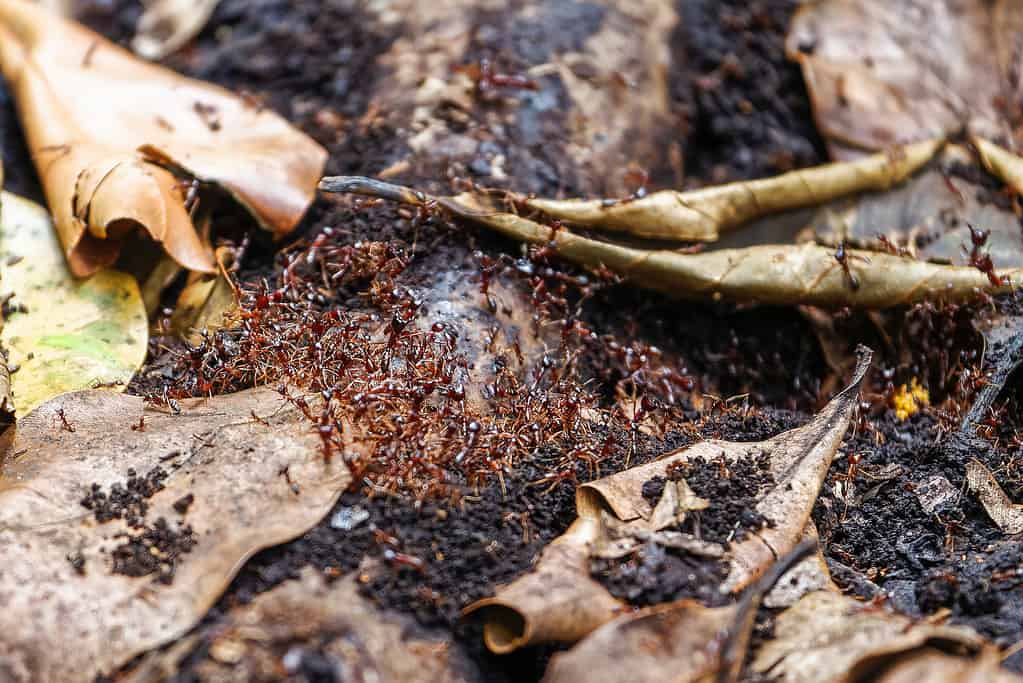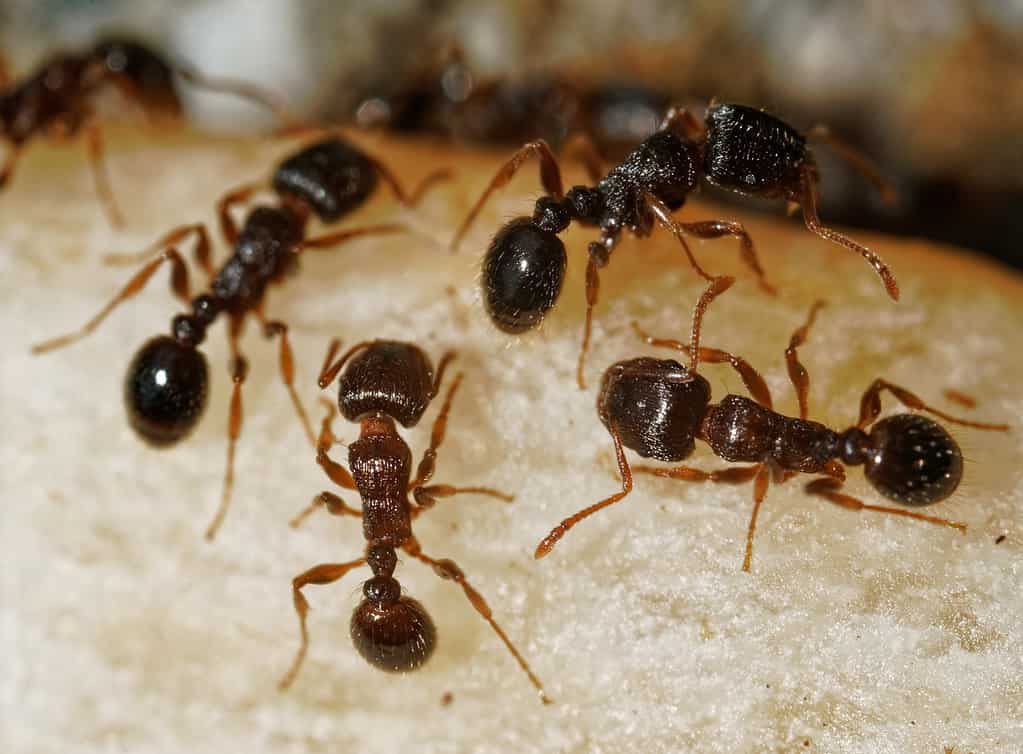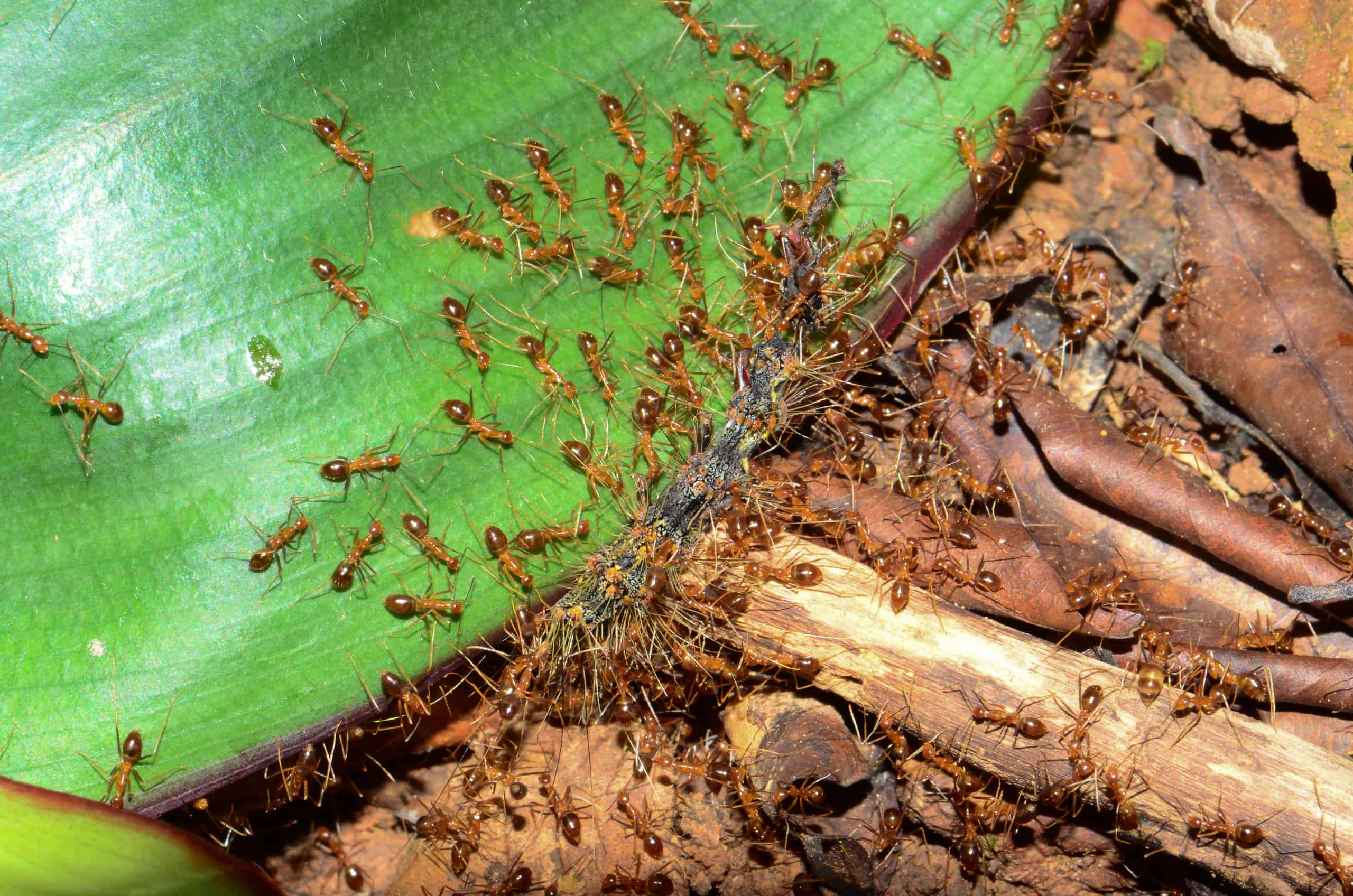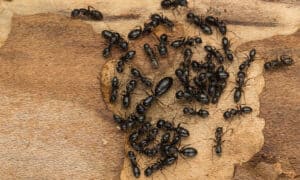Ants are some of the smallest creatures around, but they famously make up for their stature with impressive feats of strength. Even more, ants aren’t just strong, they are also some of the smartest insects around. Working together, they can communicate with one another and accomplish extremely impressive tasks that no single ant could do alone. Humans use words and language to speak, but how do these little critters ‘talk’ to one another? Let’s take a look and learn: How do ants communicate with each other, and what are they signaling?
How Do Ants Communicate?

Ants can talk to each other through various methods, with pheromones being chief among them.
©MariusLtu/iStock / Getty Images Plus via Getty Images
Like humans, ants have a few days to communicate with each other! For humans, words are usually the most common, but they aren’t the only way. For example, body language isn’t audible, but it can still convey meaning to others. Body language can convey things like intention, irony, and more, and in the same way, ants use various signals to be very specific about how they talk!
Chemical/Pheromone Signals
Ants can release certain types of chemicals, called pheromones, from their bodies (humans have them too!). These chemicals can mean things like “follow me”, “attack”, or “danger”. They can sense these chemicals through their antennae. Ants will often use their pheromones to mark trails, mark each other as part of the nest, and coordinate more complex things. Altogether, there are around 20 “words” that ants communicate with.
Physical contact
Another method ants use to talk to each other is through physical contact. For another human reference, this would be like a significant other kicking you under the table! They didn’t say anything, but their meaning is clear. They can tap or touch with antennae, or just follow one another’s lead.
Sound vibrations
Another way ants talk is probably the closest way that humans talk. Essentially, they talk by tapping their body parts (their mandibles, legs, and abdomens). These sounds can create little vibrations they can then “hear”. Ants hear the vibrations using specialized organs across their bodies.
The Types of Things Ants Communicate About

Food, borders, and nests are chief things that ants “talk” about.
Ants communicate with each other about tons of things, most of which are important for the nest as a whole.
Food is one of the most essential things ants communicate about. When one of the nest members finds food, they will come back home and communicate to the other ants that it’s time to collect a resource. Usually, it will leave a pheromone trail which the other ants will follow.
Identification is another important thing ants communicate about. They will use chemical and physical signals to identify their nest and their colony members, and can even tell other species apart using their “smell.” They also use these signals to mark their territory and defend it from intruders. Ants can also communicate with each other when they need to relocate their nest or expand it to accommodate more ants.
Enemies are also a real issue for ants. They also use these signals to coordinate their attacks or defenses against enemies. This is also similar to the process that’s used for taking down larger food sources that require the help of multiple ants.
The Types of Social Complexity Found in Ants and Other Insects

Certain levels of social ability classify insects into special categories.
©Mathisa/Shutterstock.com
Ants and other insects can show different levels of social complexity, depending on how they interact and cooperate with each other. The framework for classifying their social level is known as “eusociality”. Eusociality is the highest level of social organization, and to be considered eusocial, insects need to:
- Have division of labor
- Cooperative care of offspring
- Overlapping generations.
Not all eusocial insects are equally complex, however. Some researchers have proposed different levels or grades of eusociality, based on factors such as the number of reproductive individuals, the degree of relatedness among colony members, and the reversibility of caste roles.
For example, some ants and bees are considered to be highly eusocial (or eusocial grade 3), because they have a single queen that produces all the offspring, and workers that are sterile and specialized for different tasks. Other ants and bees are considered to be primitively eusocial (or eusocial grade 2), because they have multiple queens that can reproduce, and workers that can switch roles or become queens. Some wasps and termites are considered to be subsocial (or eusocial grade 1), because they have no clear division of labor, and offspring can help their parents raise more siblings.
Thank you for reading! Have some feedback for us? Contact the AZ Animals editorial team.








